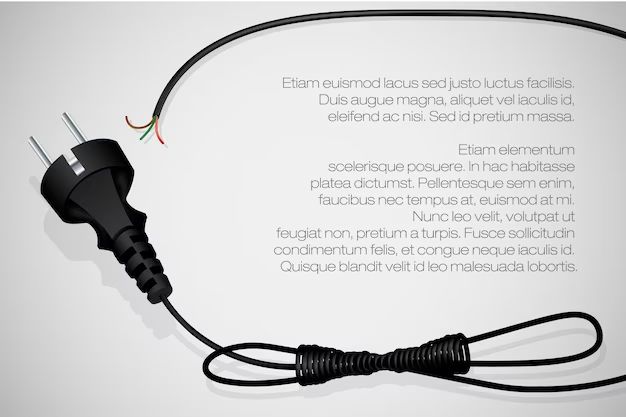Figuring out which wire is hot on a 3 prong plug is an important electrical safety question. Knowing which wire carries the live current can help prevent electric shocks and other hazards when working with electrical devices and outlets. In this comprehensive guide, we’ll provide a quick answer upfront, then go into more detail on identifying the hot wire in various 3 prong plug configurations.
Page Contents
Quick Answer
For a typical 3 prong plug in the United States, the hot wire is almost always the smaller prong that is black in color. The black wire is usually connected to a brass screw or terminal on the plug. The other two prongs are neutral (white wire) and ground (green or bare wire).
Identifying the Hot Wire
Let’s take a closer look at how to identify which wire is hot in any 3 prong plug situation:
By Prong Size
On a standard polarized NEMA plug, the hot wire is connected to the smaller prong that is about half the width of the neutral prong. This smaller prong is made to carry the higher voltage electricity while the larger neutral prong handles the return current at lower voltage.
By Prong Shape
The hot prong will also have a different shape than neutral and ground. It will typically be blade-shaped while neutral and ground are flat and wide. This is another way to easily distinguish the hot wire visually.
By Color Coding
Electric code requires the hot wire on a 3 prong plug to be color coded for safety. In almost all modern plugs in the US, the hot wire will be connected to the black colored prong or terminal. White, bare copper, or green wires indicate neutral and ground.
By Terminal Screws
Inside the plug housing, the wires are connected to brass screws orterminals. The hot wire is always terminated on a brass or gold screw. The neutral wire goes on a silver screw and ground wire on a green screw.
By Voltage Testing
You can use a non-contact voltage tester to double check which prong/wire is hot. Touch the probe end near each terminal or wire coming out of the plug. Only the hot wire will make the tester light up or beep.
Hot Wire in 2-Prong Plugs
In a 2-prong plug with just hot and neutral, the hot wire again will be attached to the smaller blade. With no ground prong, you must rely on blade size, color coding, or voltage testing to discern which is hot.
Hot Wire in GFCI Outlets
For 3 prong plugs used in GFCI outlets, the hot wire may feed into the GFCI first before going to the plug. So you cannot always assume the plug prong positions for hot vs. neutral. Use voltage testing instead.
Identifying Hot Wires in Other Countries
In countries outside the US, hot and neutral wires may be coded differently. Common color coding includes:
- UK – Brown for hot, blue for neutral
- Europe – Black, brown, or gray for hot, blue for neutral
- Australia – Brown for hot, blue for neutral
Check local electrical standards to be sure of color codes. Relying on prong size or shapes is not always accurate overseas. When in doubt, test voltage to determine hot vs. neutral.
Safety Tips for the Hot Wire
Here are some important safety reminders when dealing with the hot wire in a 3 prong plug:
- Treat every wire as potentially hot until tested otherwise.
- Use insulated tools when working with wires in a plug.
- Turn off power supply before disconnecting or cutting any wires.
- Use caution around metal junction boxes which may conduct electricity.
- Wear rubber soled shoes and avoid wet conditions.
- Keep both hands free of wires while testing voltages.
- Double check wires with a tester before grasping directly.
- Do not allow children access to the hot wire or terminals.
Conclusion
Identifying the hot wire in 3 prong plugs is a critical electrical safety step. While the black wire is hot in most American plugs, always double check using blade size, color codes, termination points, or voltage testers. Treat all wires as potentially hazardous until confirmed. Follow basic safety measures when working with hot wires to avoid shocks, fires, or electrocution.
